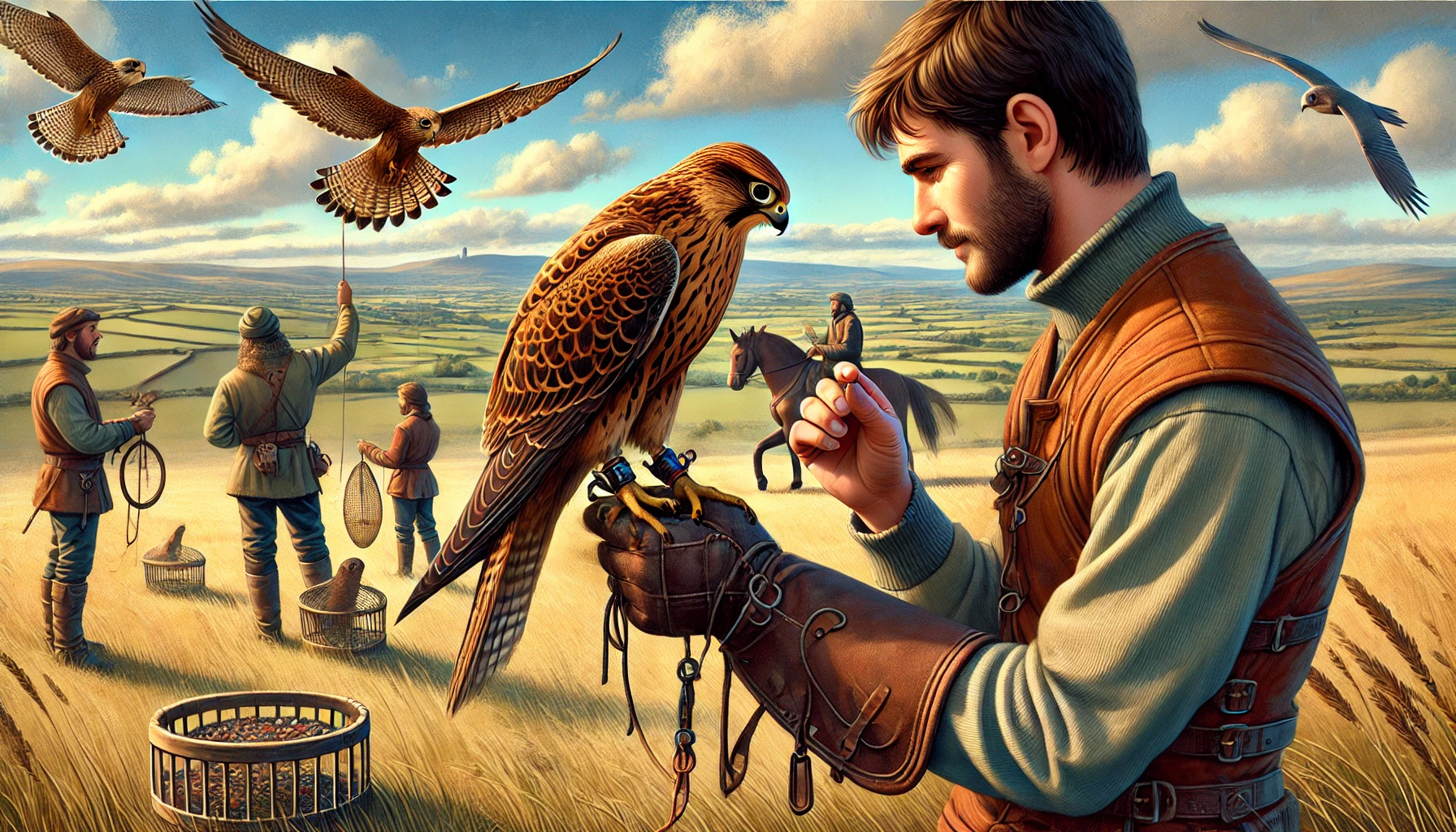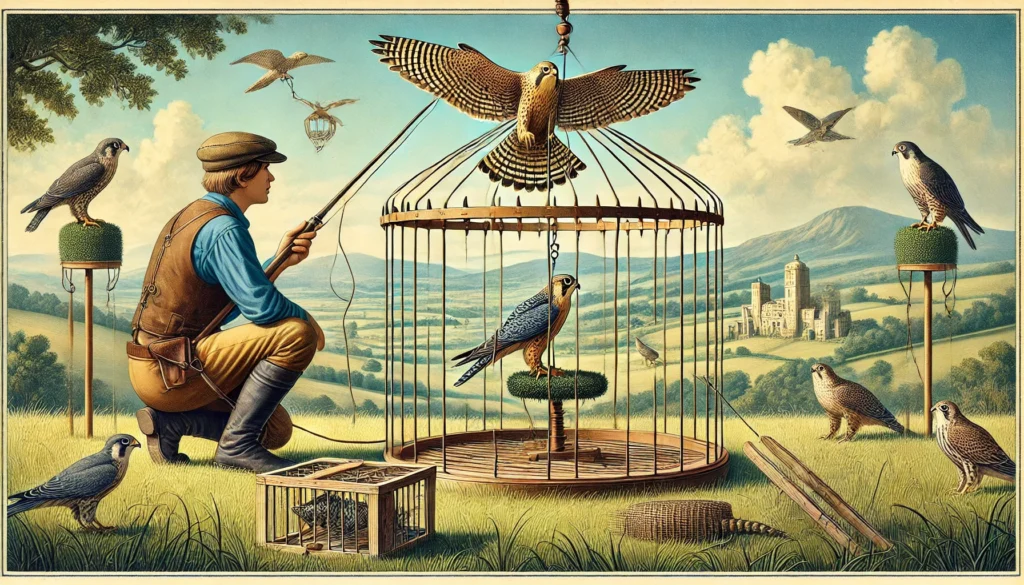Birds of prey are magnificent creatures, but training them requires skill, patience, and the right techniques. In this guide, we’ll explore effective behavioral training methods that every aspiring falconer should know. Whether you’re just starting out or looking to refine your skills, these tips will help you build a strong bond with your feathered hunting partner.
Here are the key takeaway points:
- Environment Setup: Create a comfortable and secure space for the bird
- Glove Height: Hold the bird higher than eye level during training
- Eye Contact: Avoid direct stares to prevent perceived aggression
- Food Variety: Use diverse food items tailored to the bird’s preferences
- Consistency and Patience: Maintain consistent training and allow the bird to set the pace
Unlock the Secrets of Falconry: Mastering Behavioral Training Techniques
Hey there, fellow bird enthusiasts! Ever wondered how those majestic birds of prey seem to dance on the falconer’s arm? Well, you’re in for a treat! We’re about to dive into the fascinating world of behavioral training techniques in falconry.
Picture this: You’re standing in a field, the wind rustling through your hair, and perched on your gloved hand is a magnificent falcon. It’s not just sitting there – it’s eagerly awaiting your command. Sounds like magic, right? But here’s the thing – it’s not magic at all. It’s the result of patience, understanding, and some pretty cool training techniques.
In this article, we’re going to break down these techniques in a way that’s easy to grasp, even if you’re new to the falconry scene. We’ll explore:
- The basics of positive reinforcement (spoiler alert: it’s not just for dogs!)
- How to build trust with your feathered friend
- The importance of consistency in training
- Some common mistakes to avoid (trust us, we’ve been there)
So why should you keep reading? Well, whether you’re a seasoned falconer looking to up your game or a curious newbie dreaming of your first hawk, these techniques are the key to creating that magical bond between human and bird. Plus, who knows? You might just impress your friends at the next trivia night with your falconry know-how!
Stick around, and let’s embark on this high-flying adventure together. Your journey to becoming a falconry whisperer starts right here!
Behavioral Training Techniques for Falcons
Mastering behavioral training techniques is crucial for successful falconry. Let’s explore some effective methods to shape your falcon’s behavior and build a strong bond.
Effective Behavioral Training Techniques
- Positive Reinforcement: Reward desired behaviors with treats or praise. This encourages your falcon to repeat those actions. For example, when your falcon returns to your glove, immediately offer a small piece of meat.
- Clicker Training: Use a clicker to mark the exact moment your falcon performs the desired behavior. Follow the click with a reward. This precise timing helps your bird understand which action earned the reward.
- Consistency: Maintain consistent cues and rewards. This helps your falcon understand what’s expected and builds trust.
- Gradual Progression: Start with simple tasks and gradually increase difficulty. This builds your falcon’s confidence and prevents frustration.
Correcting Problematic Behaviors
- Redirection: When your falcon displays unwanted behavior, redirect its attention to a preferred activity. For instance, if it’s screaming for attention, offer a toy or training opportunity instead.
- Ignore Unwanted Behaviors: Some behaviors, like excessive vocalization, may be attention-seeking. By not reacting, you avoid reinforcing the behavior.
- Environmental Management: Modify the environment to prevent problematic behaviors. For example, if your falcon is destroying perches, provide more appropriate chewing materials.
Effective Positive Reinforcement Methods
- Food Rewards: Small pieces of favorite meats work well. Vary the treats to maintain interest.
- Praise and Attention: Many falcons respond well to verbal praise and gentle stroking (if they’re comfortable with handling).
- Flight Opportunities: For some falcons, the chance to fly freely can be a powerful reward.
- Favorite Toys: Offer special toys only during training sessions to increase their value.
Establishing Trust with Your Falconry Bird
- Patience: Trust-building takes time. Don’t rush the process.
- Predictability: Maintain a consistent routine. This helps your falcon feel secure.
- Respect Boundaries: Learn to read your falcon’s body language and respect when it needs space.
- Positive Associations: Always make interactions enjoyable for your falcon. This could include offering treats or engaging in favorite activities.
- Gentle Handling: When physical contact is necessary, be calm and gentle to avoid startling your bird.
By implementing these behavioral training techniques, you’ll be well on your way to developing a strong, trusting relationship with your falconry bird. Remember, every falcon is unique, so be prepared to adapt your approach based on your bird’s individual personality and needs.
For more in-depth information on training techniques and building trust, explore our dedicated articles on Learn Falconry.
Conclusion
Behavioral training techniques are the cornerstone of successful falconry. By mastering positive reinforcement, consistency, and patience, falconers can build strong bonds with their birds and achieve remarkable results. Remember, each raptor is unique, so tailor your approach to suit your bird’s personality and needs.
The key takeaway? Respect, trust, and clear communication form the foundation of effective behavioral training in falconry. With dedication and the right techniques, you’ll soar to new heights alongside your feathered hunting partner.



